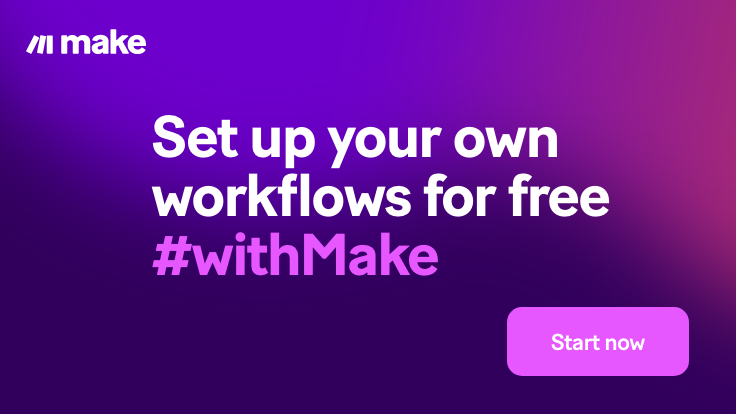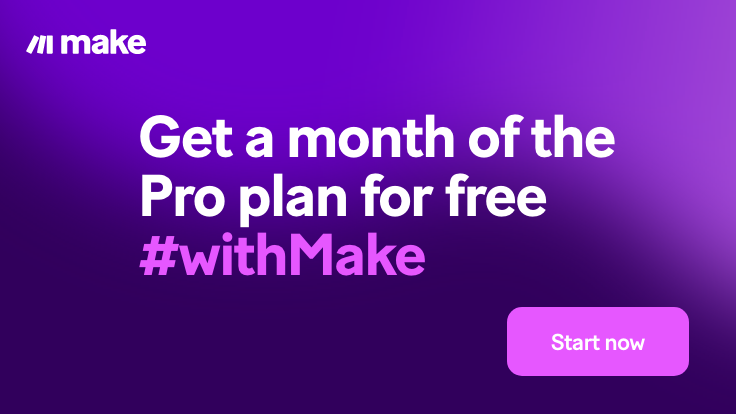AI tools have quickly become essential for today’s product managers. They cut out busywork by handling reports, collecting feedback, and keeping project details organized. These tools also boost team collaboration, connect with popular platforms, and make it easier to turn customer data into smart decisions.
Modern AI solutions aren’t just about saving time. They help product managers make sense of data, forecast trends, and improve communication with both stakeholders and users. Whether you want to speed up design, write documents faster, or predict what customers need next, the right AI tool can make your workflow simpler.
This guide highlights 17 of the most impactful AI tools for product managers right now. Get ready to find new ways to streamline your day, collaborate better, and deliver stronger results to your team.
What Product Managers Need from AI Tools

AI tools are everywhere, but product managers have specific needs that set them apart. It’s not just about automation. The real value comes when AI fits into the way PMs work, helping them get ahead and stay focused on the work that matters. Let’s break down what product managers look for in AI solutions.
Easy Data Analysis and Insights
Managing products means sifting through mountains of feedback, metrics, and spreadsheets. Product managers need AI tools that turn this flood of data into clear, actionable insights. The smartest tools will highlight trends, spot problems early, and help PMs make sense of customer needs without the headache of manual crunching.
Top features include:
- Automatic summary of survey responses and user interviews.
- Visualization of product usage trends.
- Instant prioritization of bugs or features, based on real user impact.
Seamless Collaboration with Teams
Collaboration is the heart of building products. PMs work with designers, developers, marketers, and sales―often juggling endless updates and version control. AI tools should support teamwork by keeping everyone aligned and reducing friction.
These features make a big difference:
- Smart meeting summaries and action item tracking.
- Real-time document collaboration with AI-driven suggestions.
- AI helpers that answer team questions based on documentation.
Some platforms create a digital workspace where updates and tasks are tracked automatically. This leads to fewer dropped balls and smoother launches.
Writing Support and Document Generation
From PRDs to user stories and release notes, product managers do a lot of writing. AI writing assistants are a massive time-saver. Whether you’re drafting requirement docs, updating the roadmap, or writing emails, these tools should save hours each week.
Key benefits include:
- Fast drafting of feature specs and user stories.
- Auto-updating documentation based on project changes.
- Consistent formatting and tone across all team docs.
Explore how AI-powered content generators transform the way teams create, edit, and polish essential product documents.
Flexible Integration with Existing Tools
A product manager’s day is spread across tools like Slack, Jira, Notion, and Figma. The best AI products plug into these platforms with minimal fuss. Nobody wants to copy-paste between apps or switch tabs all day.
Must-haves for integration:
- Direct plug-ins for chat, project management, and analytics platforms.
- Smooth data syncing, so nothing is lost or duplicated.
- Custom automations that fit established workflows.
AI that sits seamlessly on top of your tech stack keeps your day organized and lets you focus on outcomes instead of admin.
Fast Prototyping and Product Design
Speed matters when moving from idea to launch. PMs need AI solutions that help turn rough ideas into wireframes or interactive prototypes in minutes, not days.
Look for tools that offer:
- AI-powered wireframe and mockup generation.
- Quick validation of designs with simulated user feedback.
- Ready-made templates and suggestions based on best practices.
Want to see what’s possible? This guide to AI prototyping for product managers explores high-speed prototyping solutions that are reshaping workflows.
AI tools can transform how product managers work, but only if they focus on the real pain points. Easy analysis, better collaboration, strong integration, writing help, and faster prototyping are top of every PM’s wish list. Choosing tools with these strengths brings out the best in both the product and the team.
AI Tools Transforming Product Research and Documentation

AI is changing how product managers approach research and documentation. These tools move beyond just making tasks faster, they give PMs better data, sharper insights, and documents that update in real time. Imagine spending less time hunting for market data or formatting specs and more time building products customers want.
The explosion of accessible AI means PMs now have smart assistants for every step, from user research to writing spec sheets. Let’s look at the big changes happening in both research and documentation thanks to artificial intelligence.
Smarter Product Research with AI
Product research can be messy, with information scattered across user feedback, competitor reviews, and shifting market trends. AI steps in as a research partner, surfacing what matters and filtering the noise.
Today’s best AI research tools help by:
- Pulling insights from sources like customer surveys, social media, and forums.
- Summarizing competitor moves, pricing changes, and feature launches.
- Spotting early signals of new trends before they hit the mainstream.
Some tools even generate visual summaries or dashboards, making it simple to track what users care about most. This empowers PMs to chase high-impact opportunities and avoid false starts.
Looking for deeper insights into how AI is reshaping R&D? The article How AI Is Transforming the Product Development Process? offers expert analysis and examples from leading companies.
Automated and Dynamic Documentation
Creating and updating documentation is often the least exciting part of the job, but it’s essential. AI can now generate everything from PRDs to FAQs, pulling details from project boards, chat history, and code changes. Some tools even write clear user stories and sync them automatically with every update.
Key improvements AI brings to product documentation:
- Auto-writing standardized docs like requirements, acceptance criteria, and meeting notes.
- Real-time updates as tasks or specs change, keeping documents fresh.
- Consistent language and formatting so even large teams stay on the same page.
For teams aiming for speed and accuracy, this means less grunt work and fewer outdated docs cluttering their drives.
For more on building efficient workflows, see the guide to the best AI product management tools, which highlights top documentation and productivity platforms.
AI for Continuous Feedback and Improvement
No document or research stays static for long. AI now helps product teams collect live feedback, synthesize it, and update artifacts on the fly. Imagine a spec that gets smarter as more users chime in, or a competitor report that updates when big news breaks.
Leading AI-driven platforms let PMs:
- Track sentiment shifts in real time.
- Gather ongoing feedback from users and stakeholders with automated prompts and forms.
- Instantly spot when documents need an update to reflect new learnings.
This approach turns research and documentation into living resources, keeping everyone better informed with less effort.
AI isn’t just removing busywork, it’s helping PMs keep pace with change. Whether you want to dig into smarter research or cut down on paperwork, these tools are fast becoming a must for every successful product manager.
AI-Powered Design, Prototyping, and Visual Communication

AI is changing how product managers and design teams work together. What used to take hours, mockups, prototypes, and team feedback, can now happen in just minutes. Instead of waiting days for design updates or struggling to turn feedback into action, AI tools now help teams move at the speed of thought.
Product managers can turn their vision into visuals, explore multiple options fast, and get the kind of feedback that keeps everyone aligned.
Managing modern products means more than just managing lists and specs. Bringing an idea to life visually, and testing it in real-world scenarios, often makes the difference between a winning launch and a flop. Let’s explore how AI tools are changing the design, prototyping, and visual communication game.
AI for Streamlined Product Design
AI-powered design tools give product managers and teams instant access to smart design suggestions, layouts, and ready-to-edit assets. These platforms analyze brand guidelines, user preferences, and industry trends to recommend layouts and visuals that actually work.
Features that stand out include:
- Automated wireframes and UI mockups generated from simple text descriptions.
- Design style suggestions that keep branding consistent across every screen.
- Rapid image and graphic creation that reduces wait times for creative support.
You no longer need advanced design skills to visualize ideas or update screens. Modern AI design assistants bridge the gap between rough sketches and production-ready visuals. If you want to compare a broad range of top-ranked AI design products, see the Best AI Tools Overview.
Prototyping in Minutes, Not Days
Prototyping moves at warp speed with AI. The days of manual dragging and dropping, or endless tweaking, are fading. AI-driven prototyping tools take written ideas, user stories, or sketches and turn them into interactive prototypes almost instantly.
What does this new speed actually offer?
- Instant interactive demos that stakeholders can click through.
- Auto-generated user flows that point out bottlenecks or missing steps.
- Testing and validation tools that simulate real-user interactions and highlight design risks.
This lets teams collect feedback early and often, rather than waiting until late stages. For PMs eager to take an idea live, AI-driven prototyping is a force multiplier. Platforms like Bolt New AI Tool make it easy to build and validate concepts right in the browser without heavy lifting.
Visual Communication and Team Alignment
Design is not just what a product looks like, but also how teams communicate those ideas. AI helps bridge the divide, making project updates and vision sharing fast and crystal clear.
Key benefits for product managers include:
- Visual presentation tools powered by AI to create slides and quick pitch decks.
- Real-time feedback integrated into prototypes and designs, so stakeholders see changes right away.
- Automated documentation updates that keep design specs and conversations linked.
Teams don’t lose time in translation between PMs, designers, and engineers. Instead, everyone gets a visual, interactive view of the product at every stage. Want to find powerful creative and visual tools? Explore the AI Tools Collection for resources that enhance both design and communication across your projects.
AI-driven design, prototyping, and visual communication supercharge PMs with the agility, speed, and quality modern products demand. Getting started is easier than ever, these tools do the heavy lifting so product teams can spend more time building and less time explaining.
Data, Analytics, and Optimization Tools for Product Managers
Product managers know that making decisions without good data is like trying to steer a ship without a compass.
With AI-powered analytics and optimization tools, it’s now possible to move beyond basic metrics. These solutions take raw data, shine a light on patterns, and even suggest what actions to take next. Tracking, testing, and improving products gets smarter and faster, and often much less stressful.
Let’s look at how these tools help PMs work smarter at every stage.
Smarter Product Analytics
Gone are the days of relying on simple dashboards or waiting for an analyst’s report. Today’s AI analytics platforms do the heavy lifting for you, surfacing important trends and breaking down even massive data sets.
Key benefits include:
- Automated analysis of user flows, engagement, and drop-offs.
- Visual displays that highlight exactly where users get stuck or convert.
- Recommendations for areas that need improvement, sometimes with suggested actions.
These tools can spot hidden patterns no human would catch. They help answer questions like, “Which features do top users love?” or “What small changes would keep more customers coming back?” For more, check out recent advances in AI analytics for product teams.
Real-Time Data Tracking and Insights
Fast feedback is everything. AI-driven data tools track customer behavior, performance trends, and feature adoption in real time, no need to wait for monthly updates. Instead of pouring over spreadsheets, you get clear answers as soon as the numbers come in.
Standout features include:
- Centralized dashboards showing live product metrics and customer journeys.
- Smart alerts for sudden spikes or dips in usage, so PMs can act before problems snowball.
- Automated segmenting, letting you compare cohorts, devices, or user types side by side.
Some AI platforms even monitor social sentiment alongside app data, giving you a full 360-degree view. This means you know what’s working (and what’s not) right when it matters.
A/B Testing and Optimization with AI
Testing changes used to mean setting things up manually and waiting weeks for results. AI has transformed A/B testing into a hands-off, faster process. Now, you can run experiments with less setup and see not just what works, but why.
AI-powered optimization gives product managers:
- Rapid test creation, from website elements to app features and entire onboarding flows.
- In-depth analysis, with AI pointing out hidden factors that move the needle.
- Continuous optimization: The system learns which variants work best and automatically adapts for future users.
Imagine cutting wasted time and finding winning changes with fewer false starts. To explore how AI is revitalizing optimization and experimentation, view this guide to AI A/B testing best practices.
Bringing It All Together
With the right AI-driven analytics and optimization stack, product managers have answers at their fingertips. These tools make it easy to see what’s happening, test ideas, and stay focused on the changes that really move the dial. Modern PMs use data not just to report results but to steer the entire product journey, every single day.
Workflow Automation and Productivity Enhancers
Modern product managers juggle meetings, updates, and endless app notifications. It’s easy to feel overwhelmed by repetitive work that eats into your creative energy.
AI workflow automation and productivity enhancers give you back that time, so you can focus on strategy and team leadership instead of fighting fires all day. These tools connect your favorite apps, automate tedious steps, and streamline routine processes, often achieving in seconds what used to take hours.
Let’s get into how automation and productivity tools make work life smoother for product managers.
Automating Repetitive Tasks
Product management means spinning lots of plates, from updating roadmaps to sending out status emails. Often, these tasks follow predictable patterns, perfect for automation. AI-powered workflow solutions can:
- Auto-route tasks between Jira, Slack, and email, so nothing gets lost.
- Trigger reminders for key project milestones or overdue items, customized to each teammate.
- Move data from feedback forms into central tracking systems, making insights easy to spot.
Choosing an automation stack isn’t just about saving clicks. It means fewer mistakes, less context-switching, and steadier progress for your team. If you’re comparing options, check out this detailed workflow automation tools comparison for Make, n8n, and Zapier, all of which support deep integrations and visual flow editors tailored for busy PMs.
Productivity Tools for Smarter Workdays
Productivity boosters don’t just keep you organized, they help you escape the admin trap. The latest AI productivity apps go beyond to-dos by recommending smarter ways to plan, prioritize, and execute. Core benefits include:
- AI-powered task prioritization that sorts work by real business impact.
- Focus modes that mute digital distractions and keep your day on track.
- Automated daily summaries so you spot bottlenecks before they slow you down.
Look for tools that adapt to your unique workflows instead of forcing you to fit theirs. Solutions highlighted in the best AI productivity tools roundup offer smart scheduling, document creation, and even meeting automation, all in one place.
Centralized Management and Team Efficiency
With so many moving parts, PMs need ways to keep projects visible and teams in sync. Workflow automation helps by:
- Centralizing notifications across email, chat, and project tools, so critical updates aren’t missed.
- Syncing calendars and project boards to reduce double bookings or clashing deadlines.
- Creating smart dashboards that track team progress, highlight risks, and flag overdue tasks instantly.
Browsing the latest productivity tool listings can help you find AI solutions that match both solo preferences and big team needs, giving you control over every moving piece.
Fast Automation Setup for Non-Technical PMs
Worried that automation is just for engineers? Today’s tools feature no-code setups, intuitive drag-and-drop editors, and guided templates. This means even non-technical PMs can:
- Build custom workflows without ever touching a line of code.
- Automate documentation updates in tools like Notion or Confluence.
- Start small with automation templates, then expand as your process matures.
If you’re ready to try hands-on guidance, the AI Workflow Automation Guide walks step-by-step through automating product tasks, offering practical advice for fast wins.
AI-driven automation and productivity enhancers aren’t about working harder, they’re about working smarter, so PMs can lead their teams with energy and clarity.
Complete List: 17 Best AI Tools for Product Managers
Picking the right AI solutions can feel overwhelming, but focusing on your core needs is the fastest path to success. Below are top picks for research, design, data analysis, and automation, grouped by category to help you quickly spot the best fit for your workflow.
Research and Documentation: List relevant tools from this category with a focus on speed and accuracy improvements.
Speed and accuracy define great research and documentation tools for product managers. AI solutions now gather information, summarize findings, and draft documents in a fraction of the time. Real-time updates and smart integrations allow you to sync research with requirements, meeting notes, and user stories. Here are a few standouts:
- Notion AI: Generates summaries, analyzes text, drafts spec documents, and keeps your workspace up to date as projects evolve.
- Cogram: Turns raw meeting notes, feedback, and interviews into clear, actionable research summaries, great for sprint planning or product discovery.
- Mem: An AI knowledge base that connects notes, emails, and documents, then finds key themes in seconds.
- Fireflies.ai: Automates meeting transcriptions and follow-ups to make sure nothing slips through the cracks.
- Glean: A powerful workplace search tool powered by AI for quick data discovery across all your platforms.
Looking to cover more ground in less time? Explore the Top AI Search Engines for tools designed to boost both productivity and information quality.
Design and Prototyping: List tools that assist in visual design, prototyping, and communication.
AI-driven design and prototyping tools help bring rough concepts to life quickly. These platforms support everything from wireframing to full-fledged mockups, all while keeping cross-team communication clear and simple.
- Uizard: Converts sketches and text descriptions into polished UI prototypes, ideal for PMs with no design background.
- Figma AI (powered by FigJam Plugins): Speeds up brainstorming with instant layouts, smart suggestions, and team collaboration built in.
- Visily: Lets you create wireframes and user flows 10x faster, complete with drag-and-drop AI features.
- Galileo AI: Transforms written prompts into design mockups, making it easy to try new ideas and iterate.
- Framer AI: Takes your text or drawings and builds responsive web prototypes on the fly, which can then be shared with stakeholders instantly.
If you want cutting-edge website creation tools, browse the Top AI Website Builders for platforms that make prototyping and visual testing simple and fast.
Analytics and Data Insights: Include tools that provide actionable analytics and reporting for product teams.
Actionable analytics are the difference between guessing and knowing what your users want. AI-powered analytics tools sift through data, highlight trends, and give teams reports that anyone can understand.
- Mixpanel: Tracks user flows, conversions, and retention, then suggests steps for improvement with AI-driven insights.
- Amplitude: Surfaces behaviors that lead to higher engagement or churn, using AI to recommend next product moves.
- Google Analytics 4: AI integration means custom reports, automated anomaly detection, and predictive metrics for user journey analysis.
- Pendo: Combines product analytics with feedback to help you spot UX issues before they hurt adoption.
- Tableau with AI Extensions: Visualizes complex data and recommends ways to optimize experiences, even for non-technical users.
Get more insights about how powerful AI platforms drive better decisions by visiting the About Ello AI page, which details industry-leading trends and use cases.
Productivity and Automation: Feature tools that automate scheduling, technical workflows, or repetitive processes.
Say goodbye to busywork and hello to smarter workdays with AI-powered productivity tools. These automate repetitive steps, handle scheduling, and help you scale even with a small team.
- Motion: Uses AI to prioritize your calendar, automatically schedule tasks, and adapt as priorities shift.
- Zapier with AI-Powered Automation: Connects apps and automates workflows, letting product teams work efficiently and avoid manual errors.
- ClickUp AI: Suggests ways to optimize task lists, automate recurring reminders, and keep multi-team projects on track.
- Reclaim: Plans your meetings, work blocks, and habits, all with adaptive AI scheduling.
- Monday.com AI: Automates tracking, reporting, and routine project management, freeing time for creative work.
Ready to take your workflow to the next level? See which tools stand out for business teams in the Top AI Automation Tools for Business, featuring solutions that minimize errors and keep your projects humming.
Each of these categories serves a unique need for product leaders, and together, they form a toolkit that tackles research, design, analytics, and daily workflow challenges with ease.
How to Choose the Right AI Tools for Your Product Team
Choosing the right AI tools can set your product team up for smooth collaboration, faster delivery, and less busywork. With so many options out there, it’s easy to get lost in features or trendy claims. The key is to match your team’s actual workflow needs with what each tool offers, without getting distracted by hype or tech jargon.
Here’s how you can approach selecting the best-fit AI tools for your team.
Identify Your Team’s Key Workflows
Start by listing the daily and weekly jobs your team manages. Are your biggest time sinks in research, design, analytics, or project coordination? Pinpointing these pain points helps you target solutions that clear bottlenecks instead of just adding complexity.
Try to focus on tools that:
- Directly solve a major problem (like turning feedback into clear action items)
- Reduce repetitive tasks your team does most
- Fit with existing platforms your team already likes
A focused list makes it easier to narrow choices and skip tools that won’t get real use.
Map Tools to Specific Outcomes
Every AI tool should tie back to a real goal. Are you looking for smarter analytics, cleaner communication, or easier prototyping? Write down the ideal outcomes you want, not just features.
For example:
- Save 5 hours a week on meeting notes
- Speed up prototype feedback from three days to one hour
- Cut time spent chasing analytics reports in half
Then, test tools based on how close they bring you to these targets. A demo or trial period will reveal what feels natural and easy, versus what just clutters your stack.
Prioritize Easy Integration and User Adoption
The smartest AI tool is useless if your team avoids it or it fails to connect with the rest of your stack. Check for integrations with Slack, Jira, Figma, Notion, or whatever tools your team uses daily. The less you have to switch between apps, the more value you’ll see.
Rapid adoption comes down to:
- Simple onboarding, with helpful templates or guided tours
- Clean, low-friction interface and clear prompts
- Support for both tech-savvy and non-technical team members
For design-specific needs, look at the Top AI Image Generators to see examples of tools that work right where you need them.
Assess Support, Security, and Scalability
As your team grows, you’ll need solutions that keep up. Think about whether a tool offers strong documentation, live support, and regular updates. Check for data privacy practices and user permission controls, especially if your company handles sensitive or regulated information.
Scalability matters too. What works for a five-person team should also keep pace as your projects and users multiply. Look for tools that earn good feedback for both stability and helpful support.
Involve Stakeholders Early
Finally, loop in key team members and perhaps even a few end-users to test and compare finalists. Honest feedback from the people who’ll use the tool every day is worth more than a dozen vendor demos.
Set up short trials, ask for input, and watch how quickly people adopt (or resist) each tool. The right choice feels almost invisible, quietly boosting your workflow without constant reminders.
Taking time up front to map your needs and trial options pays off. It means the AI tools you add will actually get used day after day, making your team’s best work easier, not harder.
Conclusion
AI is reshaping product management by giving teams the ability to analyze data faster, improve team collaboration, and act on user insights with less guesswork. Adopting the right AI tools means more time spent on building and improving products, not fighting with spreadsheets or chasing status updates.
The tools highlighted here make real impact, but the best results come from experimenting and adjusting your stack as your team grows. Try different solutions, measure what works, and don’t hesitate to swap in new tools that better fit your needs.
Stay curious about the latest improvements in AI for product managers. Visit platforms like elloAI for curated reviews and fresh additions, so your team keeps its edge. Thanks for reading, if you’ve found a tool or workflow that made a difference for your product team, share it and keep the conversation going.



